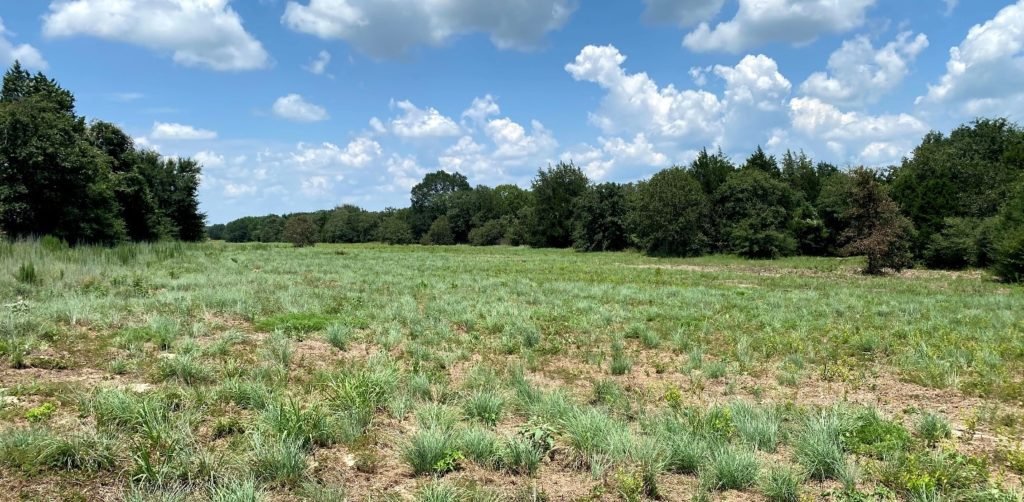Bringing Back Tanglewood Prairie
When you think about a prairie you probably think about miles and miles of grasslands in the Midwest, but did you know there are all sorts of different prairie habitats in Texas? The pocket prairies in East Texas, the costal prairie along the gulf coast, or the Blackland prairies of central Texas are a few. These habitats are vital to the Texas ecosystem, creating a unique habitat for birds, insects, and mammals.
Tanglewood Preserve in Lee County is a small tract located in the post oak savanna, a unique ecosystem that is a transitional zone between the Blackland prairie and the pineywoods ecosystems. As you drive across Texas, east to west, you’ll start in lush forests and slowly fade out of the forests into more grassland dominant ecosystems, and eventually into the desert. The post oak savanna is characterized by scattered mature hardwood trees occasionally in small groups called motts with an understory of prairie grasses, wildflowers, and other herbaceous forbs. Historically these ecosystems thrived because of frequent fires and native grazing. We have seen a decline in the extent of this ecosystem due to urban sprawl, the conversion into agriculture and turf grass pastures, and the suppression of fire. In the remaining prairies, the lack of fire is seeing them change from lush grass filled places into more of an early successional forest. Our goal is to make sure the prairie at Tanglewood Preserve remains intact. Unfortunately, we have seen a sharp increase in woody vegetation on the property beginning to take hold of the prairie and beginning to resemble a very young forest.
TLC recently secured funding to have the 10-acre prairie area of the property mulched. Essentially, a large cutting machine goes across the property turning all the young woody vegetation into mulch. This is the first step to regain control of woody encroachment and give back the needed sunlight and soil nutrients to the herbaceous prairie species. The mulch, overtime, will break down and add additional nutrients to the soil.
However, this mulching job is only the first step into restoring and maintaining a post oak savannah prairie grass habitat. In the future, TLC will need to use other tools such as fire or herbicide to make sure the mulched woody species don’t resprout and negate our efforts on the property.
Woody encroachment before mulching the prairie at Tanglewood Preserve, including yaupon, sumac, oak, and other hardwood species. // Tyler Brady
Immediately following the completed mulching at the preserve. All that is left on the ground is a layer of mulch to help the grasses come back. // Advanced Ecology
One month after the mulching was completed, the tract is responding well, with a plethora of prairie grass returning. // Tyler Brady.



